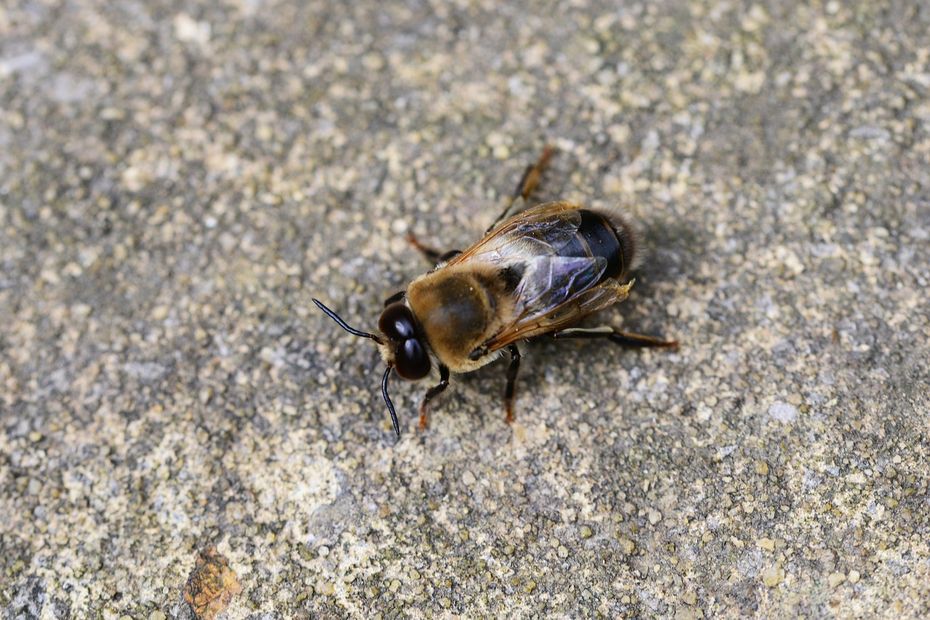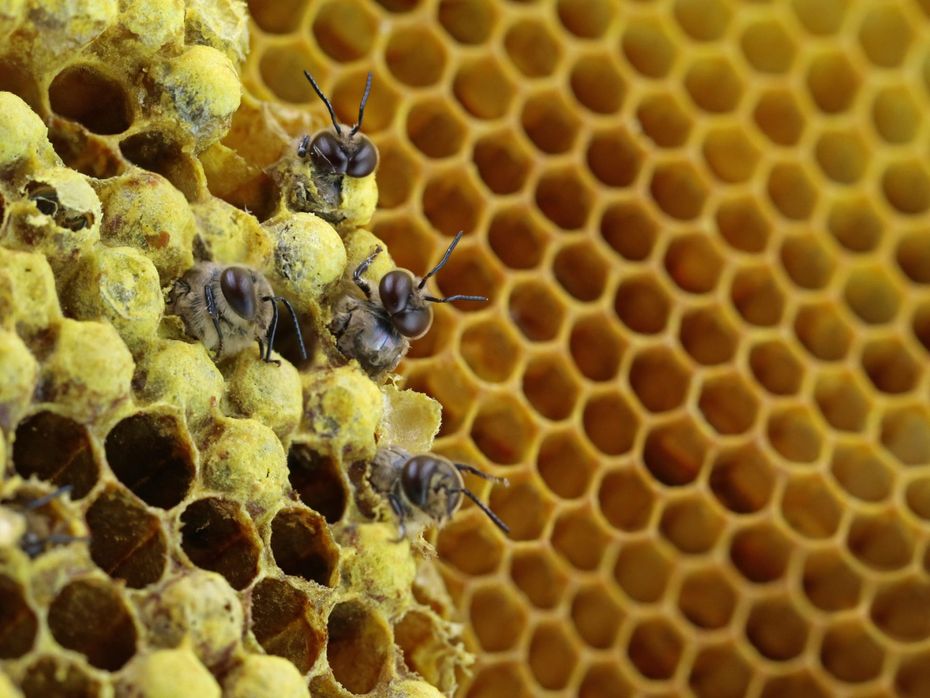Autumn is not a good time to be a drone bee. Every year as the end of the foraging season draws near, the drones are banished from the colony. A bee colony is ruled by the girls and whenever food becomes scarce, the drones are the first to be kicked out. They have a rather lazy reputation as drones do little work around the hive. However, they too are indispensable for a healthy bee colony. Therefore, in this article we take a look at these often-overlooked members of the colony.
When looking at a drone, it quickly becomes clear how they earned their good-for-nothing name. They do not forage for food, they do not support the workers or care for brood. Also, they cannot sting which makes them vulnerable against other insect or even their own sisters. Beekeepers sometimes use them to practice, for example sometimes beekeepers need to mark a queen. As the queen is the most important and valuable bee in the hive, inexperienced beekeepers can practice on drones. Not exactly something a feat which boost up the drone’s reputation. That being said, drones are vital for ensuring healthy bee colonies. Through mating they pass on important genetic traits that are vital for the survival of future bee colonies.

Life of a drone
The life of a drone is all about mating. Drones develop from unfertilized eggs, which are mostly laid by the queen. A queen can choose whether she lays a fertilized or an unfertilized egg. By doing so, she decides the ratio of workers and drones in the colony. Sometimes though, a worker bee lays an unfertilized egg, this typically happens when a colony has lost its queen. However, colonies without a queen do not survive long and unless a new queen is reared or introduced quickly, the colony will almost certainly collapse.
When a drone is about 10 days old, he is ready to mate and will fly out to a so-called drone congregation area. These are places where hundreds or thousands of drones wait for virgin queens to arrive. They are located 10-40 meters above the ground and can be up to 200 meter in diameter [1].
When a virgin queen arrives, its time to shine, the drones will follow her and try to get close enough to mate with her. Queens usually mate with no more than 20 drones, so most drones spend most of their time chasing without success. The mating is done in mid-air, the lucky drones that manage to mate, will not live to tell the story. During mating the drone’s genitals rupture from his body which causes his death.
However, as mentioned most drones however do not succeed in mating and will spend their life at the hive and by making trips to drone congregation areas. Although they do not collect food or help with the hive maintenance, they can play a role in the temperature regulation of the hive, when it gets too hot or cold in the hive. Just like worker bees they can heat up through shivering or help cooling by flapping their wings [2].
The importance of mating
Typically, the queen mates with drones from different colonies which ensures a large genetic variety. The larger the genetic difference, the better the colony resistance to diseases or parasites. Lots of behavioral traits are largely influenced by genes for example how fierce bees will defend their colony can be influenced by the genetic of the different drones that mated with the queen.
Drones and varroa
Varroa prefer drone brood as drones take a longer time to develop. Varroa mites like to sneak into cells of developing brood, as here they can feed on the larvae and pupae undisturbed. Because of the tendency of varroa mites to drone brood, some beekeepers cut away the drone brood to prevent varroa devastating the entire colony.
Despite varroa’s preference for drone brood, it must be mentioned that in absolute terms there are always more mites in the worker brood. This has to do with the fact that there are many more worker cells in the beehive. In spring about 25% of all mites are located in the drone brood, in summer 20% and in autumn 0% [3].

Drone eviction
In autumn, when the end of the foraging season gets close, the drones are evicted from the colony. This is part of the preparation of the bee colony for winter. During winter the colony has to rely and the food supply it has gathered over the course of the flowering season. During this period the queens will not mate and therefore the drones become unnecessary mouths to feed. It was found that a period of 48 hours with poor foraging can be enough to cause drone evictions [4].
Worker bees will drag the drones out the hive and prevent them from entering again. Although drones are bigger then worker bees, they cannot sting and can do little to prevent their eviction. The struggle of the drones at the hive entrance can be a cruel sight. Outside the hive the drones will starve, as they do not look for food outside the hive, even if there are flowering plants available.
Conclusion
The life of a drone occurs for a large part outside our attention, much is unknown on drone congregation areas and how they are formed. However, what is clear is that drones are indispensable for the creation of new honeybee colonies.
Literature
[1] Loper, G. M., Wolf, W. W., & Taylor Jr, O. R. (1992). Honey bee drone flyways and congregation areas: radar observations. Journal of the Kansas Entomological Society, 223-230.
[2] Stabentheiner, A., Kovac, H., & Brodschneider, R. (2010). Honeybee colony thermoregulation–regulatory mechanisms and contribution of individuals in dependence on age, location and thermal stress. PLoS One, 5(1).
[3] Cadosch, O. (2018). Aufenthaltsorte der Varroa (Presentation)
[4] Cicciarelli, R. (2013). Drone Eviction In Honey Bees (Apis Mellifera Ssp.).